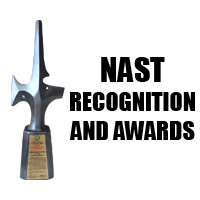The National Academy of Science and Technology, Philippines (NAST PHL) recently conducted its Policy Forum on Avian Influenza last September 29 , at the Luxent Hotel, Timog Ave., Quezon City.
The policy forum was conducted to familiarize the participants of the national avian influenza Surveillance and Response program. Factors including genetic changes, that transform the nonpathogenic Avian Flu (AI) H5N1 in humans to the highly pathogenic avian influenza (HPAI), were highlighted, along with the diagnosis and management of HPAI-infection in humans. Policies that can help ensure early detection and rapid containment of AI in animals as well as HPAI in humans were also discussed.
Academician Remigio M. Olveda, a member of the NAST PHL Health Sciences Division initiated the activity and served as the moderator of the policy forum. National Scientists Ernesto O. Domingo, graced the event and delivered the welcome remarks. National Scientists Teodulo M. Topacio Jr. graced also the forum.
The first speaker, Dr. Maria Gofezita O. Lagayan of the Bureau of Animal Industry (BAI), reported the strategies being employed by their bureau from the onset of the outbreak up to its containment. She discussed the different Avian Influenza Protection Programs currently being implemented by her agency. In her discussion, she enumerated the numerous challenges they met during the culling, including the disruption of socio-economic transactions and unwanted destruction of zoological collections and valuable breeding birds.
Dr. Robert Lo of Red Dragon Farms, Feed, Livestock and Food, Inc. reported on the nineteen-billion peso-loss suffered by poultry industry in Region 3. The outbreak greatly affected the chicken consumption in the market, which incurred further costs for dressing, cold storage, and disrupted logistics operations.On the other hand, Dr. Amado Tandoc III informed the group that the Research Institute for Tropical Medicine (RITM) is very active at providing training and technical assistance on handling respiratory specimen collection, storage and transport, among others. He presented methods for influenza detection, as well as the pros and cons of each procedure. Their research activities on the Highly Pathogenic Avian Influenza (HPAI) are in conjunction with a global network of institutes monitoring emerging infectious diseases.
Dr. Manolito Chua, also from RITM, introduced the initial treatments given to infected humans, including the use of oseltamivir phosphate, a neuraminidase inhibitor.Lastly, Dr. Edsel Maurice T. Salvaña, OYS 2010, from the National Institutes of Health, discussed the origins and virology of HPAI. He highlighted how the H5 and H7 strains are capable of direct transmission from birds to humans, instead of passing through swine, which contradicts previous observations. Dr. Salvaña emphasized that influenza is genetically diverse and can mutate into new strains by spontaneous mutations, or re-assortment. According to him, there is high probability of re-assortment because of the possibility of multiple infections inside a single cell.
After lunch, Dr. Rohani Cena synthesized the policy forum by noting the possible policy suggestions to prevent further outbreaks. These include the following: 1. Implement strict biosecurity measures, covering quarantine and animal movement. 2. Prevent public fear by adamant education and information campaigns. 3. Emphasize biosafety and occupational safety protocols necessary for field veterinary workers and laboratory workers. 4. Revisit the current zoning laws, address the faulty reporting and surveillance system, and empower poultry veterinarians.
Director Luningning E. Samarita-Domingo capped the event by delivering the closing remarks, thanking the institutions involved and noting that the continuous struggle against infectious diseases is a collaborative effort between agriculturists, health professionals, and the local government units.











